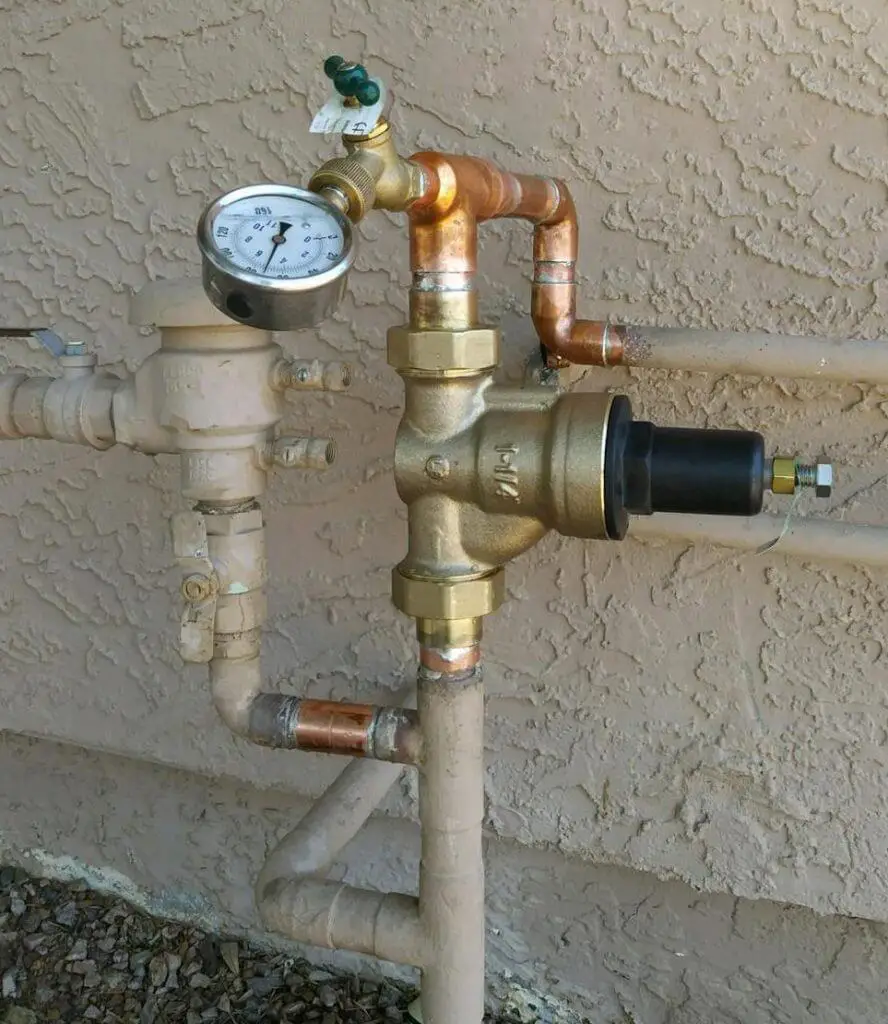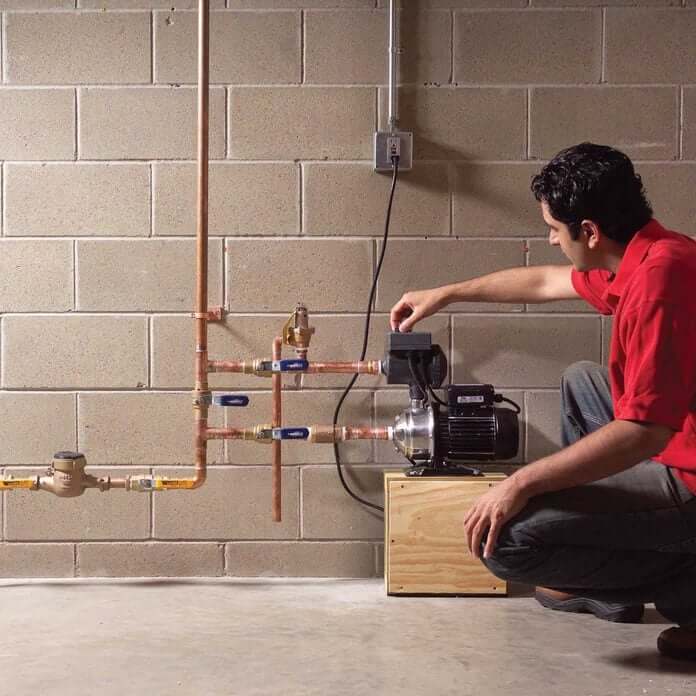Low water pressure can be a significant source of frustration in your daily routine. It can change how you wash your clothes, shower, irrigate your yard, and clean your dishes. Many people who face this problem prefer to utilize a pressure booster pump right away. While this is useful, it might be important to learn how to increase water pressure without a pump.
The issue is that there isn’t a single person to blame. There are numerous possible explanations for the pressure reduction in your water supply system.
The first step should always be to locate the water meter and check the valves. Simple installation faults or valve adjustments sometimes cause water pressure issues. Before calling a plumber, run a few simple checks to see if there’s anything you can do to save money.
How to Increase Water Pressure Without a Pump

Keep this in mind if you’ve recently upgraded your pipes or moved into a new home. Clogged pipes are unlikely to cause low pressure in these instances.
Thanks to a new system, the scope of what could be causing the problem has been narrowed. In this instance, you can follow the basic sequence of events below to make sure it’s not a human error:
- Locate the water meter
- Find shut-off valves,
- Make sure they’re both fully open.
Even if a valve appears open, even the tiniest closing can cause considerable water pressure and flow variations. So if these valves aren’t fully open, make sure they are. The water pressure will rise as a result.
If the valves appear to be correctly fitted and open when you inspect them, you may be dealing with a more severe issue. While you may believe the pressure is modest, an official test is necessary. You can perform this evaluation on your own or hire an expert.
You can get a pressure measurement from your city or county water department, or you may buy a pressure gauge and test it on an outside spigot. You should aim for a 45-55 psi value to indicate reliable pressure [1].
Causes of Low Water Pressure

- Clogged pipes: Blockages are caused by clogged pipes, which prevent normal water flow through the pipes. Water pressure drops as the flow of water is disrupted. As a result, you should inspect your pipes regularly and eliminate any blockages. Aside from that, sediment may accumulate in pipes over time, resulting in low water pressure. Furthermore, the hard mineral deposition inside pipes might form a residue. This residue will accumulate over time, forming a block that will obstruct pipes. As a result, you’ll have low water pressure.
- Malfunctioning valves: Faulty valves can also cause low water pressure in the home. You will therefore need to examine your valves and replace them immediately if they’re outdated.
- Leakage: Leaks in the plumbing system can cause low water pressure. A leak usually indicates that one of your pipes has cracked. The low water pressure might also be caused by a toilet that runs continually.
- Problems with the water pressure regulator: Water pressure regulators assist in the moderation and stabilization of water pressure. It maintains the desired pressure range. As a result, if one of the regulators malfunctions, the water pressure may fluctuate.
- Faulty fixtures: Faulty fixtures such as faucets, baths, or showerheads can cause low household water pressure. To solve the problem, clean the aerator or screen. You can also change out the entire fixture.
- Rationing of water and high water demand: Rationing is a result of water constraint or depletion. When water is rationed, the pressure is likely to be low. In most homes, many fixtures release water at the same time. Therefore, water pressure in your home may be affected by the increasing demand for water.
For instance, if someone is running your dishwasher while you’re showering, you’ll notice a drop in water pressure right away. The best approach for solving this problem is to avoid using all the water appliances simultaneously.
How to increase water pressure without a pump

- Check with your neighbors first
First and foremost: Check with your neighbors to see if they’re having trouble with their water pressure as well. The problem could be with the city’s public water supply in such a scenario. Like your home’s piping, citywide systems are susceptible to leaks, blockages, buildup, and corrosion.
- Make sure your well pump is in working order
Some households have wells driven deep into the ground, while others have water from a city’s public water supply. The condition well or the pump supplying water to the home could be the cause of your low water pressure.[2]
Deep wells, for example, are difficult to pump with centrifugal-style well pumps. Similarly, a submersible pump that hasn’t been repaired for a long time may fail.
While jet pumps are suitable for most well depths, they require maintenance from time to time. If the well can’t keep up with the home’s water demands, you may need to drill a new one.
- Check the system pressure
You can test the municipal water pressure yourself before calling your local water authority. Use a water pressure test gauge with a hose connector. Attach the gadget onto a hose faucet and turn on the water after turning off all other taps and water-using appliances in your home.
Experts say that a value of 45 or 50 psi is on the low side, 60 is a good reading, while 80 psi or higher is too high [3]. Finally, you can decide what steps to take after determining whether the city water supply is to blame or not.
- Clear the clogs
Mineral deposits can accumulate in your pipes over time. This problem can be exacerbated if you have hard water [4].
In severe cases, the diameter of the pipes shrinks to the point where the pipes clog completely, thereby stopping water from flowing through them.
While severe blockages may necessitate pipe replacement, you can clear minor clogs on your own. You can clear blockages in your system’s entry and exit points by dissolving any minerals clogging the pipes inside your faucets and showerheads.
To do this, drape an open zip lock bag containing vinegar over your shower head or faucet, secure it with string, and leave it to soak overnight. The following day, rinse cleaned fittings and reassemble them.
If this method fails to improve water pressure and you suspect a more severe mineral clog inside the pipes, hire a plumber to assess and fix the problem.
- Turn on the main water valve
This is a simple approach that takes a few minutes to figure out. The water flow into your home’s pipes is controlled by the main water valve positioned near the meter. So first, look for the valve and make sure it’s completely open.
One of the quickest ways to enhance home water pressure is to open a half-shut valve.[5]
The main valve may be mistakenly turned off during routine repairs and maintenance without the homeowner’s awareness.
If, for instance, water pressure in your system has dropped as a result of recent work on your home, the contractor may have cut off the main water supply and only partially reopened the valve at the end of the project.
Consequently, water flow is restricted, and pressure is reduced. Fortunately, adjusting the valve is simple enough that you won’t need to call a plumber.
- Replace the regulator if necessary
Many residences with public water supply have a pressure regulator, which is either installed at the meter or where the service line enters the property. The regulator ensures that water does not rush through the pipes and produce the water hammer effect.
When a regulator fails, the pressure lowers gradually, resulting in a loss of velocity that affects some or all of your home’s fixtures. Reset or replace this part to fix the problem, or better yet, get a plumber to do it for you.
- Look out for leaks
Water leaks caused by cracked or damaged pipes can siphon water away from your pipes, leaving you with just a drip at the tap. To check whether your central line is damaged, turn off all interior and outdoor faucets, turn off your home’s water valve and note down the number displayed on your water meter.
Come back in 2 hours to take another reading on the meter. A higher reading indicates a leak and may suggest that it’s time to bring in an expert.
Galvanized steel pipes are particularly prone to corrosion over time, so consider superior plastic or copper pipes if you decide to upgrade them. You shouldn’t feel obligated to complete this task by yourself. Pipe replacement requires the services of a skilled plumber.
While pipe replacement is an expensive project, it will improve your showering experience and increase water pressure in your home.
In addition to increasing water pressure and reducing the likelihood of future leaks, replacing old plumbing with new can lower the possibility of corrosive contaminants leaking into your drinking water, thereby improving the quality of your water.
- Install a water pressure booster on your property
If, after all these steps, the pressure is still low, it might be that the problem lies elsewhere such as the area topography. Water pressure is influenced by two factors: gravity and distance.
The pressure of your residential water supply may be hampered if it has to travel uphill or a long distance from the city water source. In such a scenario, the only option is to consider setting up a water pressure booster pump to improve the water flow rate when it reaches your residence.
Most standard water pressure booster pumps cost between $200 and $400. But, of course, that figure excludes the expense of installation (which should be handled by a professional) and the potential increase in your monthly electricity bill.
Read Next: Is Water House Pressure at 100 PSI Normal
Conclusion
The methods discussed above can effectively solve low water pressure in a home. You should be able to boost house water pressure in practically any situation with a bit of research, analysis, know-how, and (perhaps) professional assistance.
Understanding how to increase water pressure without a pump will enable you adopt the best approach for restoring water flow. The methods in this post will help you increase water pressure in your home so that you continue enjoying constant water flow.

Michael Davis is a heating & plumbing expert who currently works as independent contractor in SC. He also writes for Plumbertip.
For almost 10 years he worked on various plumbing tasks across South Carolina.



